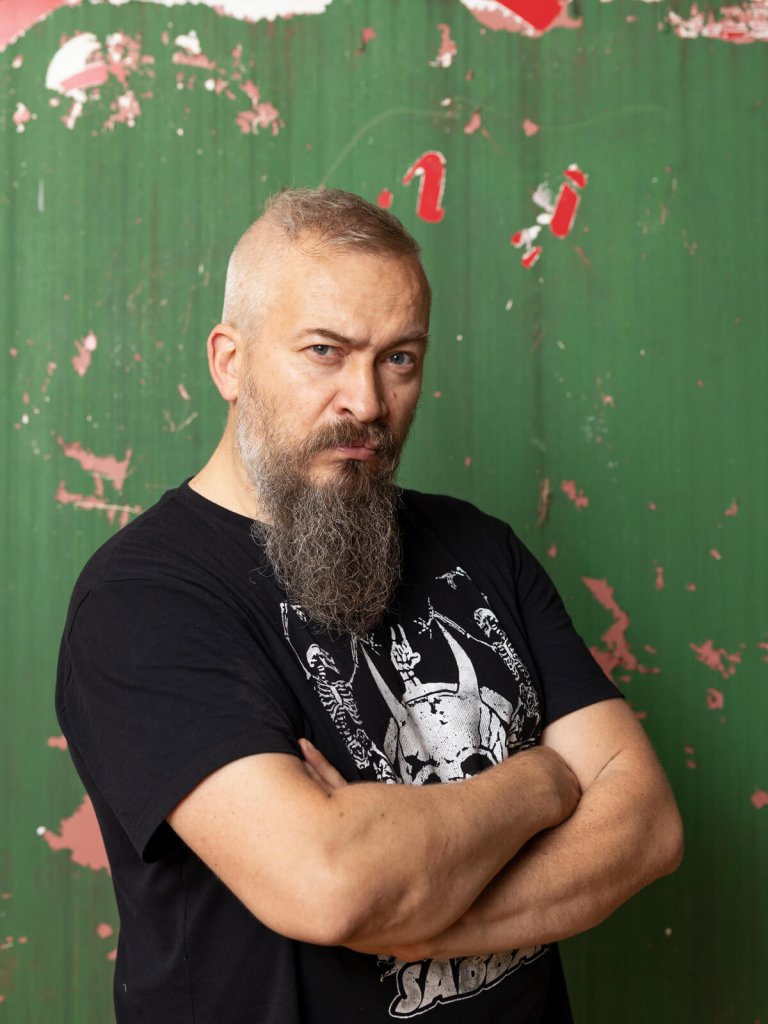*1973 (Poland)
education: sculpture at the Maria Curie-Skłodowska University in Lublin
lives and works in Lublin
Robert Kuśmirowski responded flexibly to the museum’s invitation to grasp the K67 kiosk assembly in his own artistic interpretation, both thematically and practically.
Past future anabáze
The design product K67 kiosk, based on a 1966 project by Slovenian designer and architect Saša Mächtig, is by now a phenomenon. It has become the focus of collectors’ interest. The Olomouc Museum of Art is also considering the musealization of the set. This act is already directly related to the theme of the Triennial. If we prevent extinction, do we stop the aging process and the temporality of the object, or do we extend it to a desirable and supposed eternity?
The material at our disposal is all the more interesting because its historicity itself operates in several modes. In 1967, the year that is inscribed in the product’s type name, it launched a successful commercial career thanks to the ingenious utilitarianism of its design. By the nature of its manufacture, material, colour and programmable modularity, it was clearly intended to distance itself from anything dysfunctional, old, and past. The kiosk was born in Ljubljana, right on the Iron Curtain line. At the same time, it connected the opposite poles of the geopolitical map. Because of its techno-optimism, it also became very well accepted in the countries of the Soviet bloc, including Poland, where Robert Kuśmirowski lives, works and teaches. The railway junction in the Slovak town of Žilina was the ideal moment to off-load a popular series product. In an era of mass destruction of these relics of collapsed socialism, we rescued one of Žilina’s pavilions. Until recently, it served as the back office of Mr. Lokaj’s fruit and vegetable shop.
/Cut/ and we’re setting a new mode of historicity. The approximately fifty-year-old building is taken out of its original functionality, location and “common” flow of time. Questions arise as to the optimal treatment, degree of restoration and presentation. In a lively correspondence with the curators, Robert Kuśmirowski mentions his admiration “for the atmosphere of the years in which he could not have lived”. Much of his work takes the form of historical pictures (in fact 3D installations) with the theme of Vanitas. He also consistently adapts the Olomouc kiosks into a form referring to nostalgia from both worlds, the future and the one that is already behind us. Nostalgia in this case does not operate as a sentimental “ostalgie”, but as an integral part of Vanitas, a historicizing concept dealing with the void, nothingness or impermanence. The author sees K67 as “a shell from the past that was designed with the future in mind”. The future will be contained in the past and the past in the future. In the manner of an archaeologist, the author constructs a parallel surreal time that we have never experienced and that we simultaneously pass by because we do not even experience it. Everything reminds us of something, but we feel that the most optimistic visions of the past have not come true, and the image of the future, through a worn container, turns into a dystopia rather than a utopia.
